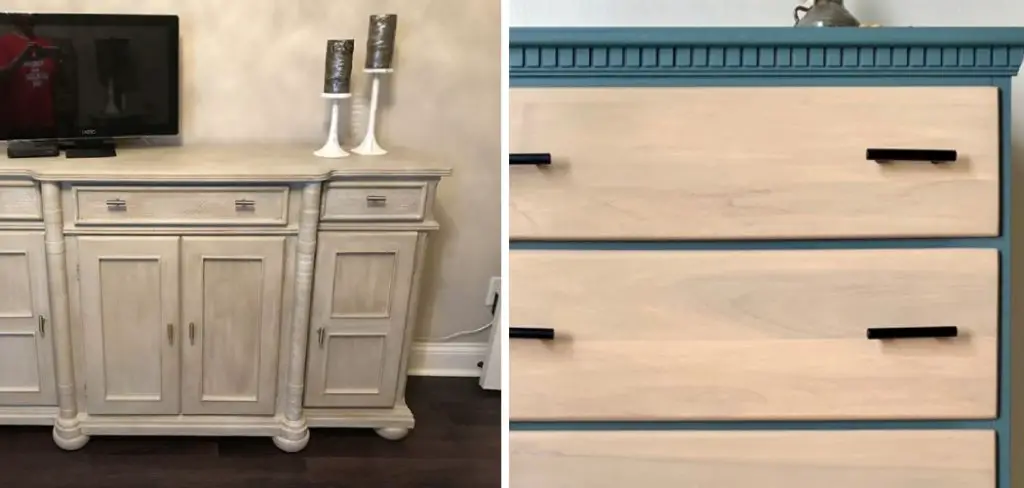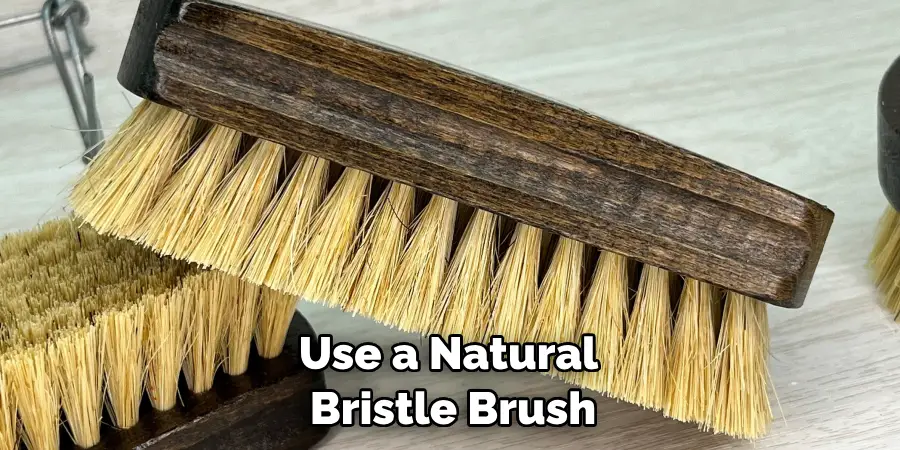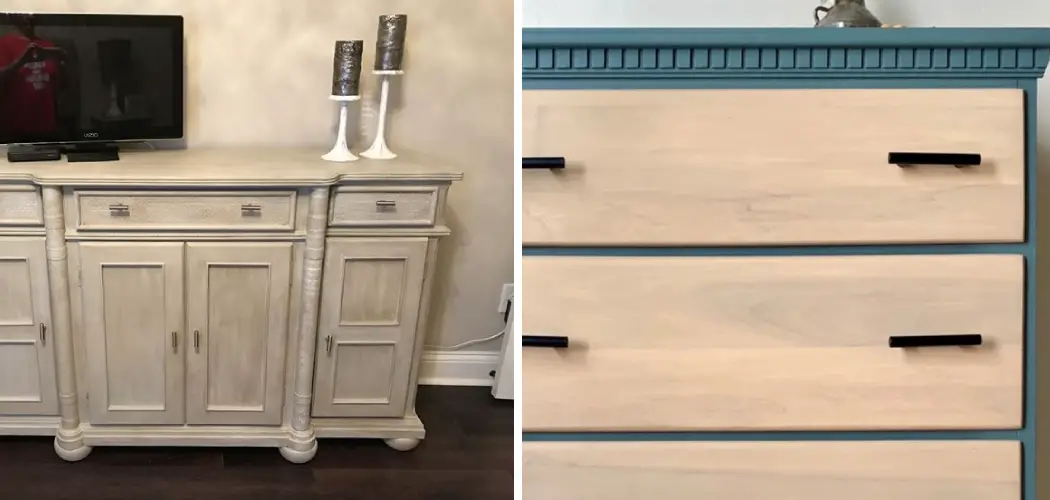Are you looking to give your furniture a natural, beachy vibe? Have you ever considered trying the classic technique of tan-washing wood? It’s an easy process that not only adds character and depth to pieces but also brings out unique grain patterns. Tan washing gives wood panels or surfaces a subtle hint of color that can create just the right look for any home.

In this blog post, we will be detailing how to tan wash wood in order to achieve desired results with minimal effort involved. If you’re ready to get started on tanning some wood today, read on!
What is Tan Washing?
Tan-washing wood is a form of wood finishing technique that dates back to the 18th century. This process involves using two different colors of paint, one light, and one dark, and applying them to the same piece of wood in order to achieve a unique patterned look.
The darker color acts as an “antique wash” and is wiped off after the light color has been applied. The result is a beautiful, aged look with unique grain patterns that add depth and character to the wood’s overall finish.
Tools and Materials You Will Need to Tan Wash Wood
- Soft cloth
- Natural bristle brush
- Dark and light paint colors of your choice
- Paintbrush or roller
- Sandpaper (optional)
Step-by-Step Guidelines on How to Tan Wash Wood
Step 1: Preparing the Wood Surface
The first step to tan-washing wood is to make sure that the wood surface is properly prepared. This means cleaning it thoroughly with a soft cloth and natural bristle brush to remove any dust, dirt, or debris. It’s also important to sand away any rough patches on the wood before painting, as this will make the tan-washing process much easier.

Step 2: Applying the Paint
Once your wood surface is prepped and ready for painting, it’s time to apply the paint. Begin by applying a thin coat of light color paint to the wood, using a brush or roller. Be sure to cover all areas evenly and completely with the paint. While the light color is still wet, add a thin layer of the darker color paint and lightly brush it on in random patterns. This will create a unique, aged look on the wood surface.
Step 3: Wiping Away the Darker Color
Once you have applied both light and dark paint to the wood, it’s time to start wiping away the darker color. Take a soft cloth or natural bristle brush and carefully wipe away any areas of darkness that have been created by the darker paint. This step is where the unique grain patterns are brought out, so take your time and be sure to get into all of the nooks and crannies of the wood surface.
Step 4: Finishing Touches
Once you have created your desired patterned look on the wood, it’s time to add some finishing touches. If needed, lightly sand the wood to smooth out any rough areas. Then, apply a coat of sealant or finish to protect and enhance the natural beauty of the tan-washed wood.
Following these steps carefully will help you achieve perfect results with minimal effort! Tan-washing wood can add unique depth and character to any interior and is a great way to give the furniture a beachy, natural vibe.
Additional Tips and Tricks to Tan Wash Wood
1. Consider the look you’re going for when selecting a wood stain. If you’d like to achieve a light, natural look, then choose an oil-based stain or whitewash. For darker colors, choose a water-based or gel stain.
2. Make sure that your wood is clean and free of dirt before staining. If your wood is dirty, the stain won’t penetrate properly and you won’t get the desired effect. Use a mild cleaner such as dish soap and warm water to clean the surface of your wood.
3. After you have cleaned your wood, it needs to be dried completely before staining. Wood that has not been sufficiently dried can lead to blotchy or uneven results when stained.
4. When tan-washing wood, use a natural bristle brush and coat the wood evenly with the mixture. Make sure to work your way from top-to-bottom in order to avoid leaving streaks.

5. If possible, try to do your staining outside on a sunny day. This will help the stain dry faster and provide a more even application.
6. Once you’ve applied the tan wash, allow it to dry for approximately 24 hours before applying any additional coats. You can typically apply up to three coats of stain without having to sand between each coat.
7. When you have achieved the desired look, use a clear sealant or varnish to protect the wood and keep it looking its best. Make sure to follow the manufacturer’s instructions when applying the sealant or varnish.
With these tips, you can easily achieve a beautiful tan wash finish for your woodworking project. Tan-washing wood is an easy way to update any piece of furniture and give it a unique look that will last for years to come.
Things You Should Consider to Tan Wash Wood
1. Choose the right type of wood for tanning – oak, walnut, chestnut or mahogany are all good choices as they are dense and easy to work with.
2. Prepare the wood surface before tanning by cleaning it with a mild soap and water solution. Make sure to allow the wood to dry completely before applying any solution.
3. Use a tanning solution that is specifically designed for wood surfaces, such as tung oil or boiled linseed oil. Apply the solution with a brush or cloth and allow it to sit for 1-2 hours before wiping off any excess.
4. Allow the tanning solution to dry completely before applying any additional coats of stain or finish. If you are using a stain, make sure to apply it in thin coats and allow each coat to dry completely before applying the next.

5. Once the desired color has been achieved, apply two to three coats of clear finish to protect the wood from moisture and wear. Sand lightly between coats for the best results.
6. Let your tan-washed wood project cure for at least a week before using it. This lets the finish dry thoroughly and prevents any potential damage to the wood surface.
7. Maintain your tan-washed wood project regularly by wiping off dust and dirt with a soft cloth or brush. Any more serious cleaning should be done using a mild soap solution or warm water, but make sure not to use too much moisture as this can damage the finish.
8. Taking proper care of your tan-washed wood project will ensure that it lasts for many years to come. Regularly check the surface for signs of wear and tear, and apply a fresh coat of finish if needed. This will keep your piece looking as good as new!
Following these considerations and steps will help you to achieve the best results when it comes to tan-washing wood. With enough patience and attention to detail, anyone can create beautiful pieces that will last for years to come!
Frequently Asked Questions
What is Tan Wash Wood?
Tan wash wood is a process of applying a special solvent to darken the color of the wood and increase its water resistance. This special solvent penetrates deeply into the wood, changing its color and preventing it from absorbing water, which helps keep the wood looking new for longer.
What are the benefits of Tan Washing Wood?
Tan washing your wood has many beneficial effects. Not only does it add color depth to the wood, it also helps protect it from water damage. It can be used on outdoor or indoor surfaces, making it a great choice for furniture, decks, siding, and more. Tan washing your wood also adds a layer of protection against UV rays and makes it easier to clean in the future.
How often should I Tan Wash Wood?
This depends on where the wood is located and how much exposure it gets. Generally speaking, outdoor wood should be tan-washed once every two years or so to prevent fading and water damage. Indoor wood that isn’t exposed to direct sunlight or high levels of humidity may not need to be tan-washed as often.

What type of wood is best for Tan Washing?
Oak, walnut, chestnut, and mahogany are all great choices for tan-washing as they are dense and easy to work with. Consider the look you’re going for when selecting a wood stain. If you’d like to achieve a light, natural look, then choose an oil-based stain or whitewash. For darker colors, choose a water-based or gel stain.
What’s the best way to apply Tan Wash to Wood?
The best way to apply tan wash is with a natural bristle brush and evenly coat the wood. Make sure you work from top-to-bottom in order to avoid leaving streaks. Also, it’s best to do your staining on a sunny day outside if possible, as this will help the stain dry faster and provide a more even application.
Conclusion
After reading this blog post, you should have a clear understanding of how to properly tan wash wood. It was important to stress the importance of a thorough and safe cleaning because that will determine whether your project looks professional or not. Adequate preparation is key to success.
Remember, if you’re using a natural cleaning agent like Tung oil, be sure to wear protective gloves and always get advice from experts when it comes to handling powerful chemicals or solvents. When applying the tan wash, do so in slow movements and ensure your surfaces are dry before you begin with the tan wash application.
In conclusion, now that you know how to tan wash wood, go ahead and start working on your next project with confidence! The results will definitely surprise you as long as you take the right steps when preparing and applying the tan-wash paste!

